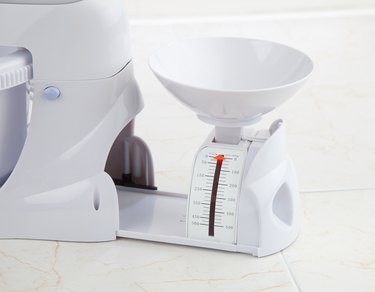
Exchanges are a carbohydrate-counting diet system focusing on the needs of diabetics. The objective of using the exchange system in your daily diet is to maximize the nutritional content of your food while minimizing the effects it has on your blood sugar. Although most often you will find it easier to determine food exchanges by looking at a chart, it can also be handy to know how to calculate exchanges based on nutritional information.
Step 1
Talk to your doctor or dietician and determine how many calories you should consume each day. This information is essential, as 45 to 65 percent of your daily calorie intake should come from carbohydrates. For example, if your doctor recommends 1,600 calories per day, calories from carbohydrates should be between 720 and 1,040 each day.
Video of the Day
Step 2
Calculate how many grams of carbohydrates your calorie intake allows. One gram of carbohydrate is equal to four calories so divide your range of calories by four. For example, if your calorie range is 720 to 1,040 calories, this equals 180 to 260 g of carbohydrates each day.
Step 3
Calculate how many carbohydrate exchanges, or servings, this allows you each day. No matter what the food, one carbohydrate exchange equals 15 g of carbohydrate. If your daily carbohydrate range is 180 to 260 g, divide each number by 15 to get your exchange range. In this case, your daily range is 12 to 17 carbohydrate exchanges.
Step 4
Read food labels, paying particular attention to serving size, total servings and carbohydrates per serving. If the label states that a single serving size is 4 oz, and there are three servings in the package, each containing 10 g of carbohydrate, if you eat the whole package, you just ate 30 g, or two carbohydrate exchanges. Measure and weigh the food item to make sure you get the serving size, and carbohydrate exchange, right.
Step 5
Calculate the grams of carbohydrates in foods without labels by weighing the food, looking up the food factor and applying the formula "food weight x food factor." For example, if you weigh a handful of dry spaghetti and it comes to 2 oz, multiply this weight by the food factor for pasta, which is 7.5 g of carbohydrates per ounce. You have 15 g, or one exchange of pasta, in your hand.
Things You'll Need
Food scale
Calculator
Measuring cups
Video of the Day